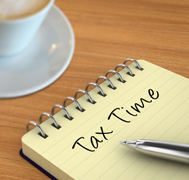2017 Tax Deadline for Sole Proprietors Right Around the Corner – Are You Prepared?
 While the 2017 personal tax deadline has passed, the self-employed tax deadline is still approaching. Sole proprietors have until June 15, 2018. Are you prepared?
While the 2017 personal tax deadline has passed, the self-employed tax deadline is still approaching. Sole proprietors have until June 15, 2018. Are you prepared?
If you don’t file before the June 15 deadline, you will be subject to CRA interest and penalties.
CRA late-filing penalties and interest charges are the same for the self-employed tax deadline as they are for personal income tax. If you file late, you’ll be subject to paying an additional:
- 5% of your balance owing, plus;
- 1% of your balance owing for each month the return is late, up to 12 months, and;
- compounded daily interest starting June 16, 2018.
The CRA late-filing penalty is even higher if you’ve missed filing a return in a previous year. If you’ve been charged for late filing previously, you may have to pay an additional:
- 10% of your balance owing, plus;
- 2% of your balance owing for each month the return is late, and;
- compounded daily interest starting June 16, 2018.
While the late-filing penalty is the same for sole proprietors as for individuals, the collection penalties can be substantially steeper.
A CRA garnishment on a sole proprietor business can be up to 100% of your earnings. CRA can contact your clients for the garnishment and your clients are legally obligated to pay.
If you are an employer, the amounts that you deduct and withhold from the wages of your employees are considered trust amounts. If you operate a business as a sole proprietor, partnership, or corporation, the GST/HST amounts you collect from your customers are also deemed trust amounts. You can’t use these as cash flow and they must be paid in full when owed.
If you owe taxes as a sole proprietor, don’t wait to file until after the 2017 tax deadline. The consequences will be much worse.
But if you can’t pay your tax debt, what can you do instead?
Step 1: Make a Plan.
If you’re not filing because you don’t have receipts, there are solutions.
If you’re not filing because you know you can’t pay, you need a plan to deal with debt. The plan you make will depend on your business, income, and debt. There are options available. A financial professional can help you find the right answer for you.
Step 2: Get Filed.
As we outlined above, there are no benefits to delaying your filing. At best, it will only result in interest and penalties that will make your tax debt even bigger. At worst, it could lead to court action for tax evasion. Make sure to file before the 2017 tax deadline.
Step 3: Implement Your Plan.
After you’ve filed, it’s time to take action to deal with your tax debt.
DebtCare Canada offers one of the only solutions that stops CRA, freezes CRA interest, stops collection action, and can actually reduce the principal tax debt.
Don’t wait until the self-employed tax deadline.
Call us today for a free consultation at 1-888-890-0888 or visit us online at www.debtcare.ca.


